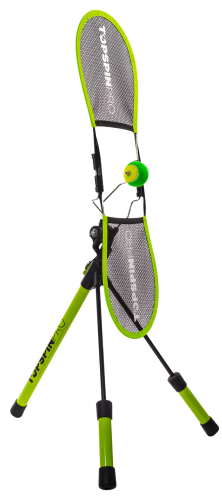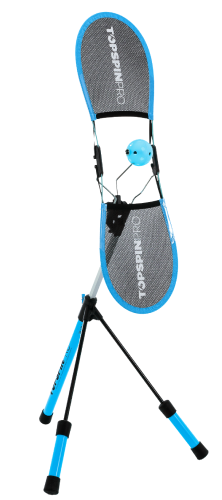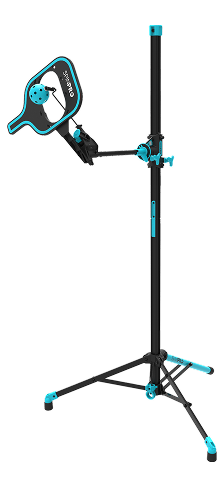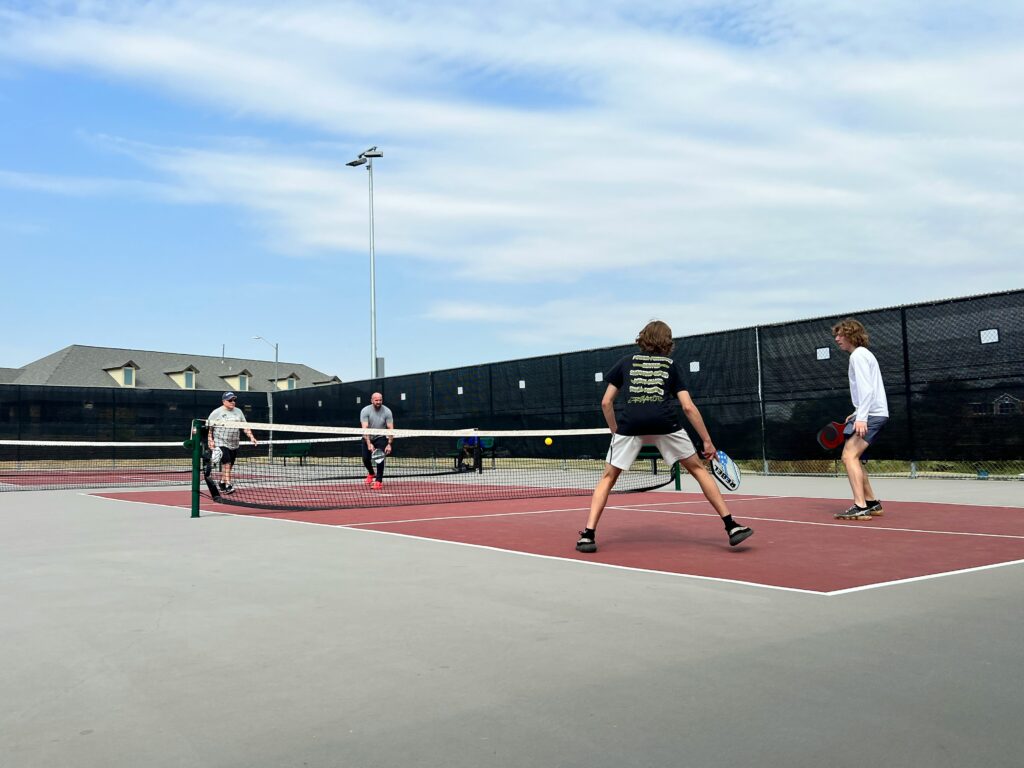If you’ve played even a few games of pickleball, you’ve probably heard it: “Get to the kitchen line....and stay there.”
It’s one of the most repeated mantras in the sport and for good reason. Most rallies are won at the non-volley zone (NVZ), and controlling that space often determines who controls the point. But here’s the truth: you shouldn’t always stay at the kitchen line, you should learn to control it.
The best players in the world don’t stay frozen at the line. They constantly adjust, moving forward and back and side to side. They even move back to the baseline. This is all in relation to the pace, height, and spin of the incoming ball.
Why It's Easier to Win At The Kitchen
The main reason it's easier to win points close to the net is that it gives you the earliest possible contact point after the ball crosses it. That means you can:
- Hit Down - The opportunity often arises to hit the ball directly down into the court and also at your opponent's feet. The further back in the court you are, the more you have to lift the ball up and over the net.
- Reduce Reaction Time - You are closer to the other side of the court and therefore reduce your opponent's reaction time.
- Hit Better Angles - More angles open up the closer you are to the net.
- Add Pressure - Just the sight of you up close will add pressure to your opponents.
Common Mistakes At The Kitchen Line
- Being Too Stationary - Being flatfooted reduces your reaction time and ability to move into position.
- Standing Too Close - Leads to unforced errors and limits reaction time.
- Backing Up At The Wrong Time - Standing too far back exposes your feet and leaves angles open for attack.
Knowing when to be close or back off is key!
When To Back Away From The Kitchen Line
1. When Under Attack
If your opponents are speeding up the ball and you’ve got no time to react, take a small step back. Even one or two controlled steps can turn panic into purpose. That little bit of space gives you time to read the ball, soften your hands, and reset the rally instead of popping it up.
By dropping back, you shift from defense to offense, ready to absorb the pace, reset with control, and then move back in to reclaim the kitchen line.
Here's some extra tips on How To Beat A Banger In Pickleball
2. When You Anticipate A Lob
Hugging the kitchen line leaves you open to attack on the lob. By continually adjusting your position according to the play, you reduce their options. It will also make it more obvious when they look like they are about the attack with the lob.
3. When Off Balance Or Out Of Position
Being at the kitchen line only works well when you are trading equal blows. If you are off balance stretching for a shot or forced out of position then take a few steps back to regain your position.
4. When Defending Power Shots
If the ball pops up and you see your opponent about to hit an overhead, there's a slim chance you will return it if you are at the kitchen line. If you drop back to mid court it gives you a chance to defend. Likewise, if your opponents are in a position to drive the ball at you, give yourself a little more time.
5. When You Need To Reset
You might not always be under a barrage of attack, but there are times when your simply need to reset the ball. Maybe a bad pop up or contact or your need a little more time to build into the rally. By dropping back a step or two it's easier to reset the ball consistently and gives you more time to get a good contact.
6. When Your Partner Is Pulled Wide
If your partner is dragged off court (especially on a crosscourt dink), staying at the line can leave a huge open lane behind you.
In that case, drop back diagonally to cover the middle and give them time to recover. You’re temporarily shifting into a “defensive triangle” until the court is balanced again.
7. When The Elements Are Against You
When the wind and sun are giving your problems it often pays to take a step back. Wind blowing towards you or sun in your eyes can make a game so much harder. By giving yourself that bit of extra time it can help you stay in the game before you switch to the better side of the court!
Here's some extra tips on How The Weather Affects Pickleball
Why You Should Always Be Moving
It's not just a case of waiting until you are under attack or needing more reaction time to move back. You should be continuously moving and going with the flow of the game.
A general rule of thumb is that you should be closer when attacking and further back when defending. It's important that you understand what tactical position you are in and where your partner is after every shot. Learning to read the game is as important as working on your technique.
Bonus Tip: Watch some pro doubles, this is the best way to learn and visualize what you are trying to achieve. We've included some great highlights below so you can see that continuous "flow" of position.

How To Practice
Practicing your "flow" on the pickleball court can be done in a variety of ways. You can:
- Doubles Drills- Set up some drills with your friends so you can practice different scenarios as a foursome. This is the best way to practice the tactical elements and play with realistic scenarios.
- Drill With A Partner - Drilling with a partner is a great way to refine the skills needed for playing in all areas of the court and especially the touch needed for shots such as resets.
- Drill Alone - Drilling along is a way to practice your footwork and conditioning and also refine your technique. You can use tools like the TopspinPro or SpinPro to help you. You can also use a ball machine or wall to drill. Here's some extra tips on How To Practice Pickleball Alone And Love It

Conclusion
The kitchen line isn’t a place to camp, it’s a position to earn, lose, and earn back again. Great players know that control in pickleball isn’t about standing still, it’s about adapting to the flow of the rally. Sometimes that means stepping back to defend, absorb, and reset before moving in again to attack. When you learn to move fluidly you stop reacting and start dictating play. The best players don’t just own the line, they own the space around it.
FAQs
-
Why is controlling the kitchen line important in pickleball?
Controlling the kitchen line allows you to hit the ball earlier, reduce your opponent’s reaction time, and create better angles. It also puts pressure on your opponents, often determining who controls the point.
-
Should you always stay at the kitchen line during a rally?
No, the best players constantly move forward, backward, and side to side depending on the ball’s pace, height, and spin. You should learn to control the kitchen line, not just stay frozen there.
-
When is it advisable to back away from the kitchen line?
You should step back when under attack, anticipating a lob, off balance, defending power shots, needing to reset, when your partner is pulled wide, or when weather conditions like wind and sun affect play.
-
What are common mistakes players make at the kitchen line?
Common mistakes include being too stationary which limits reaction time, standing too close which causes errors, and backing up at the wrong time which leaves open angles for opponents to attack.
-
How can you practice controlling the kitchen line effectively?
Practice flow and positioning through doubles drills, partner drills, and solo drills focusing on footwork and technique. Using tools like ball machines or apps can also help refine your skills and adaptability on court.
Enjoyed this article?
Be sure to sign up for our newsletter and we'll keep you up to date about new posts



